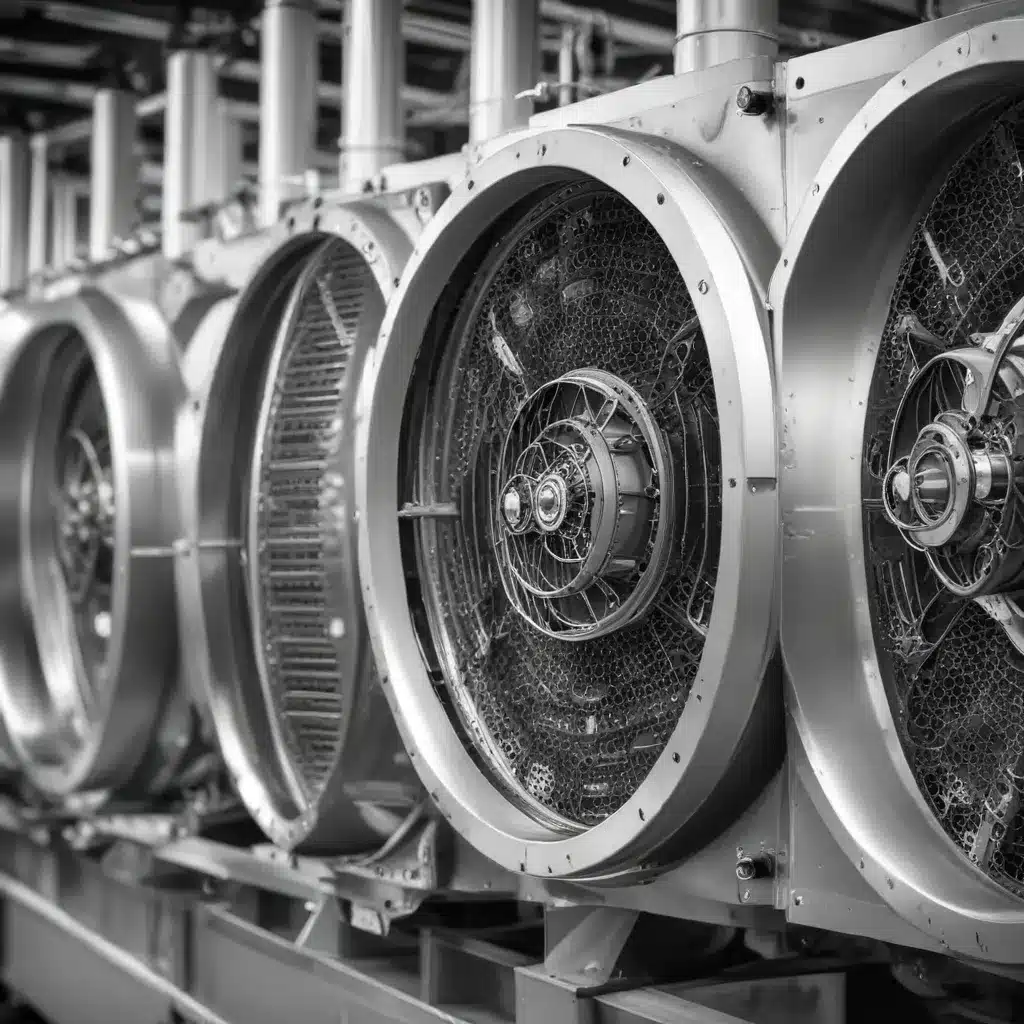
Unlocking the Potential of Efficient Thermal Management
As industries across the globe strive for greater sustainability and energy efficiency, the role of air-cooled heat exchangers has become increasingly critical. These robust and versatile devices play a pivotal part in various applications, from power generation and industrial processes to HVAC systems and data centers. However, the future of air-cooled heat exchanger technology is rapidly evolving, driven by the need for more advanced thermal management solutions.
Overcoming the Limits of Conventional Air-Cooled Heat Exchangers
Conventional air-cooled heat exchangers have long been the workhorse of many industries, leveraging the natural ability of air to dissipate heat. Yet, as equipment and systems become more complex and energy-intensive, the limitations of traditional air-cooling approaches are becoming increasingly apparent.
“The next generation of gas turbine aero engines will be more efficient, compact, and have more electric components, which will generate more heat that needs to be dissipated,” explains Soheil Jafari, a leading expert in thermal management systems for aircraft engines. “The current thermal management systems are already working at their limits, and alternative methods are needed to address these challenges.”
To push the boundaries of air-cooled heat exchanger performance, researchers and engineers are exploring innovative technologies and design strategies. These include advanced materials, optimized airflow patterns, and integration with complementary cooling systems.
Harnessing the Power of Advanced Materials
One of the most promising avenues for enhancing air-cooled heat exchanger technology is the development of advanced materials. “Novel materials, such as high-performance alloys and composites, can significantly improve the heat transfer capabilities and durability of these devices,” says Dr. Theoklis Nikolaidis, co-author of the review paper “Thermal Management Systems for Civil Aircraft Engines: Review, Challenges and Exploring the Future.”
By carefully selecting and engineering the materials used in air-cooled heat exchangers, engineers can create structures that maximize heat dissipation while maintaining structural integrity and corrosion resistance. This could involve the use of specialized coatings, fin designs, or even the integration of phase-change materials to enhance thermal management.
Optimizing Airflow and Heat Transfer
In addition to material advancements, the optimization of airflow patterns and heat transfer mechanisms is another crucial area of focus. Computational fluid dynamics (CFD) simulations and experimental testing are enabling engineers to fine-tune the design of air-cooled heat exchangers, ensuring efficient heat dissipation and minimizing pressure drops.
“Innovative fin geometries, such as wavy or louvered fins, can significantly enhance the heat transfer coefficient and increase the overall effectiveness of the heat exchanger,” explains an industry expert. “By better understanding the complex fluid dynamics and heat transfer phenomena, we can unlock new levels of performance.”
Integrating Hybrid Cooling Systems
While air-cooled heat exchangers remain a popular and cost-effective solution, there is growing recognition that integrating them with other cooling technologies can provide even greater thermal management capabilities. This hybrid approach can involve the use of liquid cooling, phase-change materials, or even thermoelectric cooling to complement the air-cooling system.
“Combining air-cooled heat exchangers with liquid cooling or phase-change materials can create a synergistic effect, where the strengths of each technology are leveraged to overcome their individual limitations,” says a thermal system design engineer. “This hybrid approach opens up new possibilities for high-density, high-heat-flux applications.”
Addressing Maintenance and Reliability Challenges
As air-cooled heat exchanger technology evolves, ensuring reliable and efficient long-term operation is crucial. Maintenance considerations, such as fouling prevention and easy access for cleaning, are becoming increasingly important design factors.
“Proactive maintenance and monitoring strategies are essential to maintain the optimal performance of air-cooled heat exchangers,” emphasizes a plant manager with extensive experience in industrial thermal management. “Incorporating self-cleaning features or automated monitoring systems can help reduce maintenance costs and downtime.”
Exploring Novel Applications and Emerging Trends
Beyond the traditional industrial and HVAC applications, air-cooled heat exchangers are finding their way into new and innovative sectors. From data centers and renewable energy systems to electric vehicles and aerospace applications, the versatility of these heat exchangers is being increasingly recognized.
“As the world becomes more digitalized and electrified, the demand for efficient thermal management solutions will only continue to grow,” notes a technology strategist. “Air-cooled heat exchangers will play a pivotal role in enabling the next generation of energy-efficient, high-performance systems.”
Embracing a Sustainable Future
Alongside the pursuit of enhanced performance, the air-cooled heat exchanger industry is also actively addressing the broader sustainability agenda. Efforts are underway to develop heat exchangers that are more energy-efficient, use eco-friendly refrigerants, and incorporate recycled or recyclable materials.
“Sustainability is no longer an afterthought, but a driving force behind the development of air-cooled heat exchanger technology,” says an environmental engineer. “By aligning with global sustainability goals, we can create heat exchangers that not only perform better but also have a lower environmental impact.”
Conclusion: Shaping the Air-Cooled Heat Exchanger Landscape of Tomorrow
As the world continues to demand more efficient, compact, and sustainable thermal management solutions, the future of air-cooled heat exchanger technology is poised for exciting advancements. By harnessing the power of innovative materials, optimizing airflow and heat transfer, integrating hybrid cooling systems, and addressing maintenance challenges, the industry is paving the way for a new era of air-cooled heat exchanger excellence.
From data centers to power plants, and aerospace to electric vehicles, these versatile heat exchangers will play a pivotal role in enabling the next generation of energy-efficient, high-performance systems. As we embrace a sustainable future, the air-cooled heat exchanger industry is at the forefront of driving innovation and unlocking the full potential of thermal management technology.

